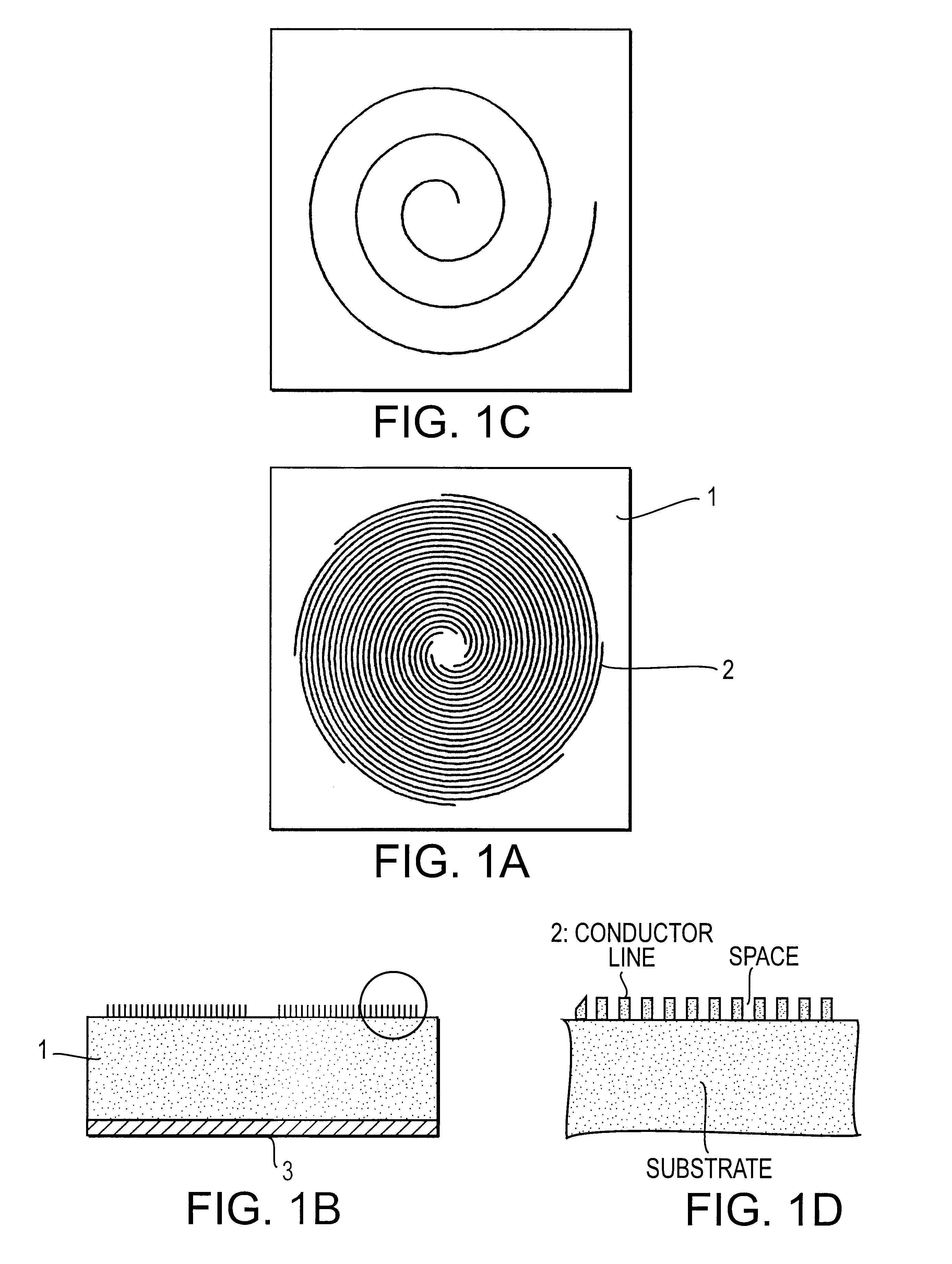Resonator, filter, duplexer, and communication device
a communication device and filter technology, applied in the field of resonators, can solve the problems of reducing the characteristics of the resonator, the inability to solve the problem of the power loss due to the edge effect, and the penetration of magnetic fluxes into the resonator
- Summary
- Abstract
- Description
- Claims
- Application Information
AI Technical Summary
Benefits of technology
Problems solved by technology
Method used
Image
Examples
first embodiment
[Principle and FIGS. 1 to 10]
A ground electrode 3 is formed on the entire lower surface of a dielectric substrate 1. On the upper surface of the dielectric substrate 1, eight spiral lines 2 having the same shapes, both ends of the lines being open, are disposed in such a manner that the spiral lines do not cross each other. One end of each of the lines is disposed around an area where no lines are present, which is equivalent to the center of a spiral shown in FIG. 1A, as the central part of the substrate 1. Only one of the lines is indicated in FIG. 1C in order to simplify the illustration. Preferably, the width of the lines is substantially equal to the skin depth of the conductor material of the line.
FIG. 2 is a graph in which the shapes of the eight lines shown in FIG. 1 are indicated by polar coordinates. In this case, a radius vector r.sub.1 of the inner peripheral end and a radius vector r.sub.2 of the outer peripheral end of each of the eight lines are fixed, and the positi...
second embodiment
[Second Embodiment]
In the second embodiment shown in FIGS. 11A to 11C, the inner peripheral end and outer peripheral end of each line 2 formed of a multi-spiral pattern on a substrate 1 are grounded to a ground electrode 3 via a through-hole. This allows the line to serve as a resonant line whose two ends are short-circuited. In this structure, since both ends of the resonant line are short-circuited, the resonator has a good shielding characteristic, by which it is not very susceptible to electromagnetic leakage to the outside and influences due to external electromagnetic fields.
third embodiment
[Third Embodiment]
In the third embodiment; shown in FIGS. 12A to 12C, the inner peripheral end of each line of a multi-spiral pattern is grounded to a ground electrode 3 via a through-hole. The outer peripheral end thereof is open. This arrangement permits the lines to serve as a 1 / 4-wavelength resonator. Since the resonator can provide a desired resonant frequency with, a short line length, the area occupied by the resonator on a substrate can be further reduced.
PUM
 Login to View More
Login to View More Abstract
Description
Claims
Application Information
 Login to View More
Login to View More - R&D
- Intellectual Property
- Life Sciences
- Materials
- Tech Scout
- Unparalleled Data Quality
- Higher Quality Content
- 60% Fewer Hallucinations
Browse by: Latest US Patents, China's latest patents, Technical Efficacy Thesaurus, Application Domain, Technology Topic, Popular Technical Reports.
© 2025 PatSnap. All rights reserved.Legal|Privacy policy|Modern Slavery Act Transparency Statement|Sitemap|About US| Contact US: help@patsnap.com



